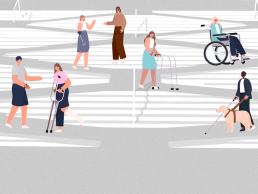Designing Equitable Spaces

Written by Abigail Baggley
Abigail is a qualified Architect and Architectural Director at BoonBrown with day-to-day responsibilities running our London Studio. She plays an important role shaping the company culture and is passionate about bringing holistic thinking to design with a focus on inclusivity and connectivity, finding opportunities for reuse and to recycle, and exploring ways to embed landscaping within design to maximise habitat creation.
Understanding Equitable Design
Firstly, what is equitable design? The dictionary definition of equity, is to provide equal treatment to everyone whilst still acknowledging the differences between individuals. This implies that there are inherent differences between individuals’ circumstances, and for everyone to achieve the same equal outcome, they must be given tools and opportunities specific to their needs.
So how do these principles affect the design of urban spaces? To explore the concept, we felt it would be best represented as two graphics.

Scene one: from a practical perspective this succeeds in meeting the needs of its users, however, in this design there maybe experiential differences for those using the stairs vs those using the ramp. For example, how do the views beyond the space vary if you use the stairs or use the ramp, and are the lighting conditions different, and how do materiality choices change the feel of each space? There will be inherent differences between the users’ experience and therefore, we see an opportunity for more equitable design.

Scene two: in this option we explore another ramp and stair configuration delivering the same practical design outcome, however in this scenario it’s provided through a blended architectural design, where every user now has the same experience. People with all accessibility needs are catered for within one cohesive design, rather than segregated access arrangements where there will be inherent differences between what people experience.
We see equitable design as an opportunity to embed inclusivity within every design choice. This goes beyond equality and statutory requirement, and considers the detailed experience of each user, celebrating diversity and offering social experiences that are genuinely equal for everyone.